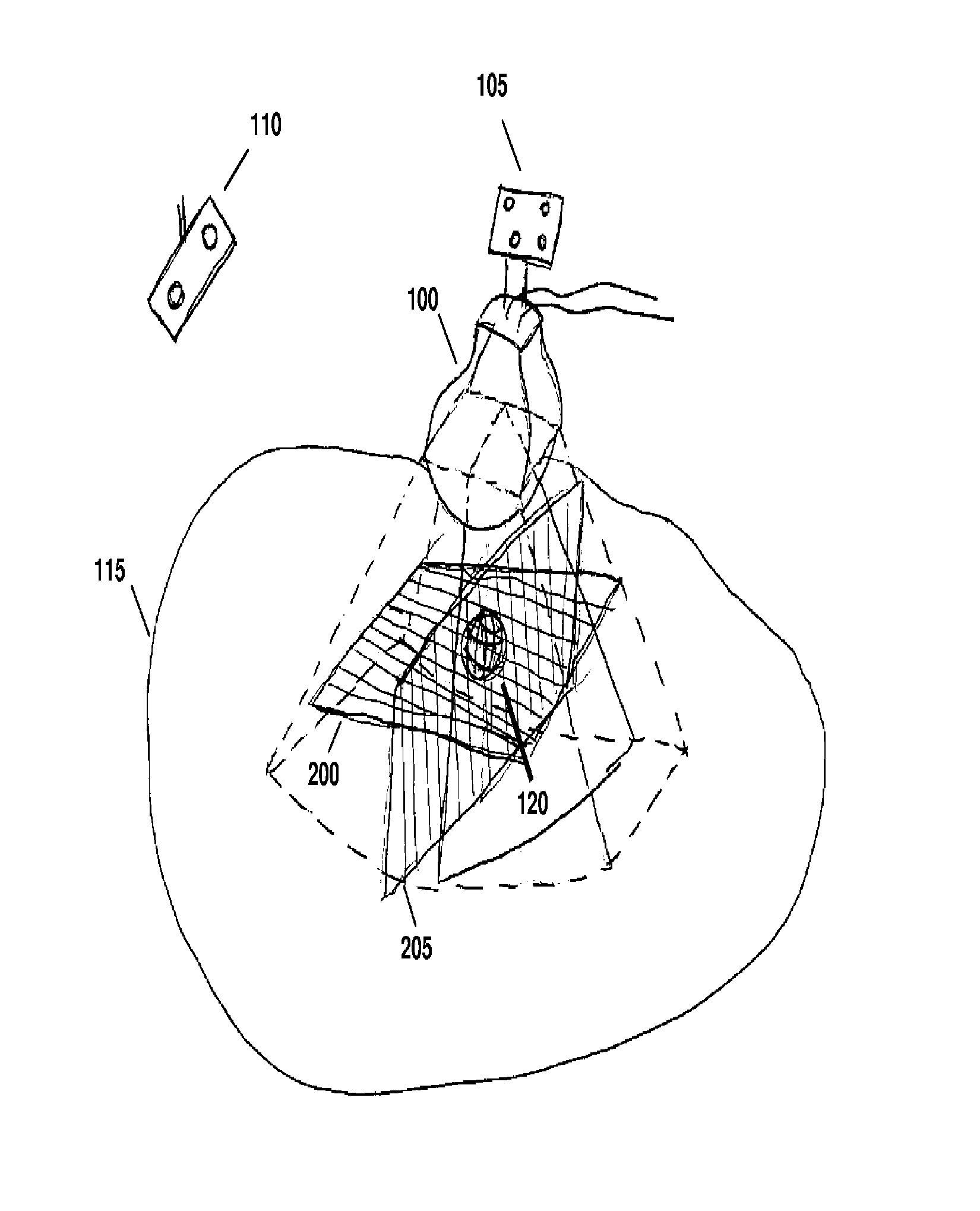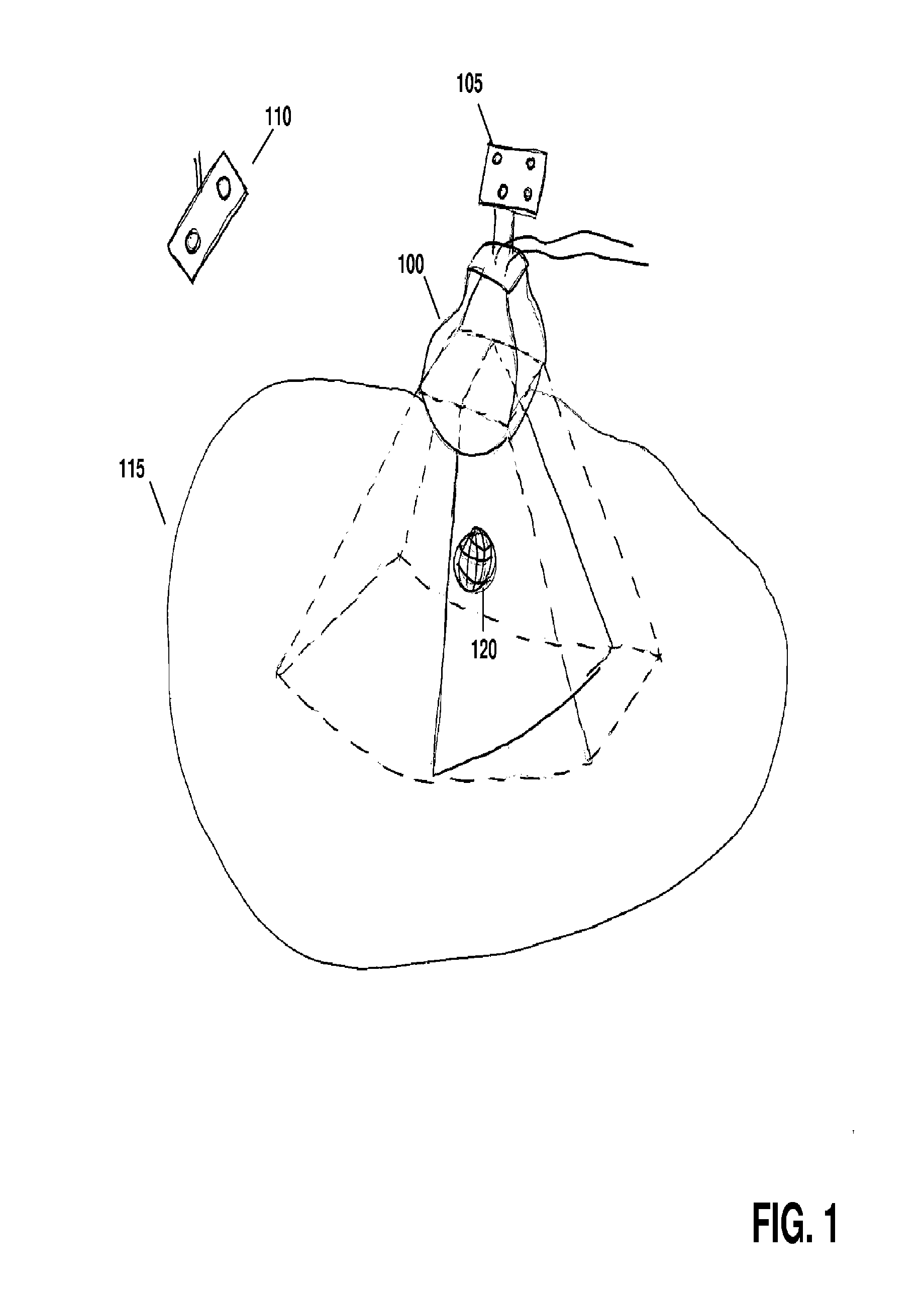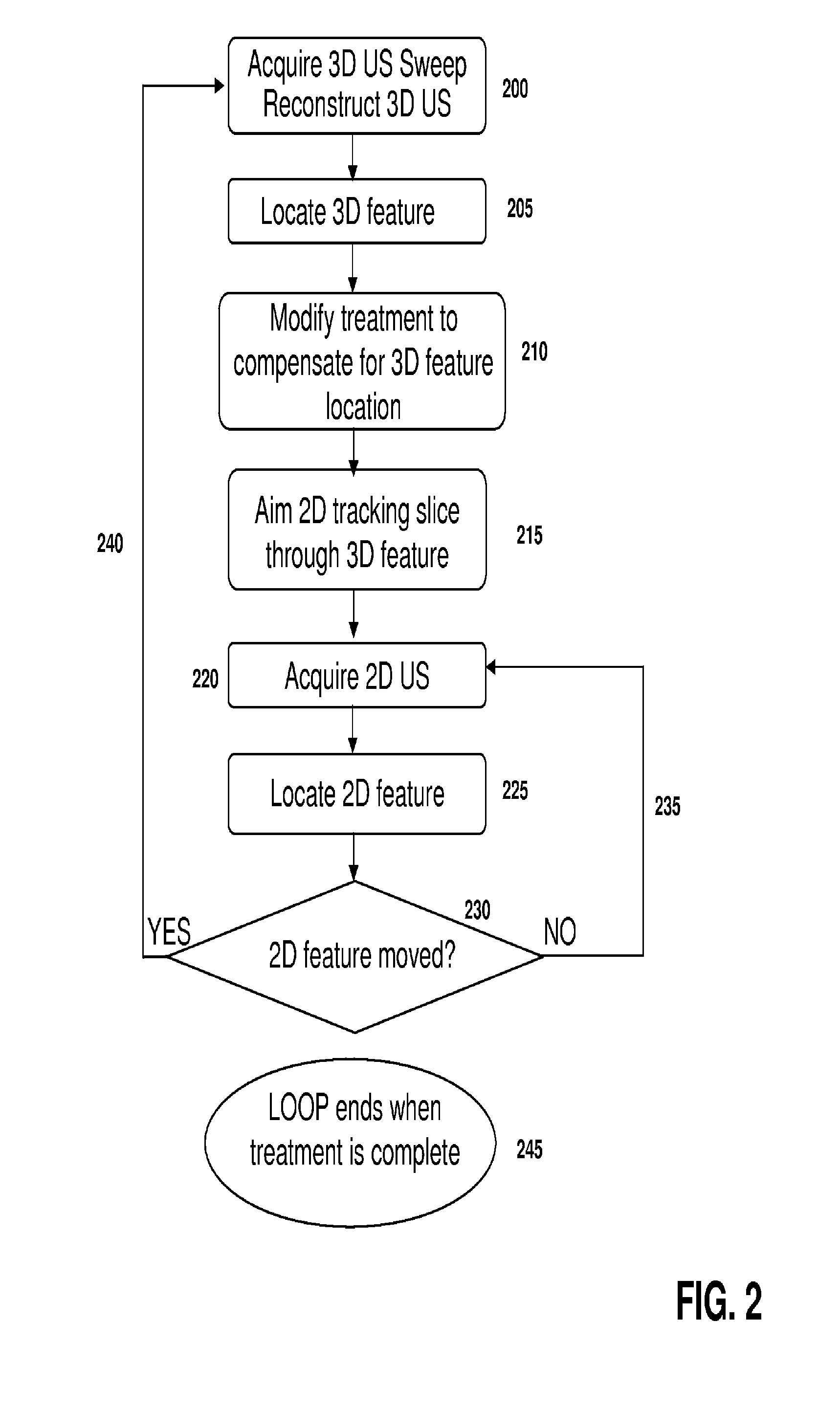Feature tracking using ultrasound
a technology of ultrasound and features, applied in the field of medical procedures, can solve the problems of unachievable continuous monitoring with this methodology, unsatisfactory ray imaging exposure, and procedures that require undesirable extra radiation
- Summary
- Abstract
- Description
- Claims
- Application Information
AI Technical Summary
Benefits of technology
Problems solved by technology
Method used
Image
Examples
Embodiment Construction
[0030]Throughout the following descriptions and examples, aspects and embodiments of the invention are described in the context of tracking intrafractional motion during the delivery of radiotherapy. However, it is to be understood that the present invention may be applied to tracking attributes of virtually any feature within or on a patient during any form of medical procedure requiring anatomical tracking, such as external beam and brachytherapy, cryotherapy, hyperthermia, high intensity focused ultrasound treatments (HIFU)) and / or various forms of imaging (e.g., CT, 4DCT, PET, US, SPECT, and MRI).
[0031]Referring to FIG. 1, a motorized, mechanically sweeping three-dimensional ultrasound probe 100, which is of particular use in this application, contains a two-dimensional probe inside of a housing, the two-dimensional probe being able to sweep at different angles within the housing, controlled by a motor. In certain applications, tracking markers 105 are affixed to the probe handl...
PUM
 Login to View More
Login to View More Abstract
Description
Claims
Application Information
 Login to View More
Login to View More - R&D
- Intellectual Property
- Life Sciences
- Materials
- Tech Scout
- Unparalleled Data Quality
- Higher Quality Content
- 60% Fewer Hallucinations
Browse by: Latest US Patents, China's latest patents, Technical Efficacy Thesaurus, Application Domain, Technology Topic, Popular Technical Reports.
© 2025 PatSnap. All rights reserved.Legal|Privacy policy|Modern Slavery Act Transparency Statement|Sitemap|About US| Contact US: help@patsnap.com



